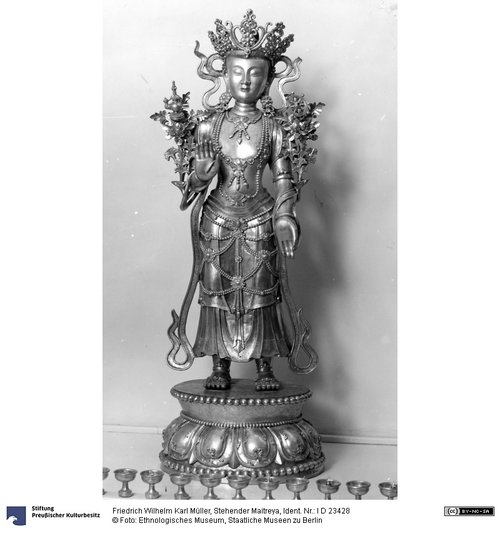Maitreya (von maitri: Güte, Wohlwollen, Liebe) wird gemäß der buddhistischen Lehre als der zukünftige Buddha und kommende Weltlehrer betrachtet. Maitreya ist der Nachfolger von Gautama Buddha. Bis dahin ist er Bodhisattva mit der hauptsächlichen Aufgabe, das Wissen des reinen Dharma zu verbreiten. Das Standbild dieses Maitreyas ist im lamaistischen Qing-Stil angefertigt.
Sino-tibetische Bronzen
Während der Qing-Dynastie in China (1644 - 1911), insbesondere unter Kaiser Qianlong im 18. Jh., entstand ein wachsendes Interesse am tibetischen Buddhismus. Sowohl in China als auch in der Mongolei begann die Herstellung tibetischer Kunst, mit einem ganz eigenen, sogenannten sino-tibetischen Stil (auch lamaistischer Qing-Stil genannt), ohne jedes Zeichen indischen Einflusses. Charakteristisch für diesen Stil sind besondere Verzierungen in der Ausstattung, z.B. Tuch-Drapierungen und Schleifen.
en

